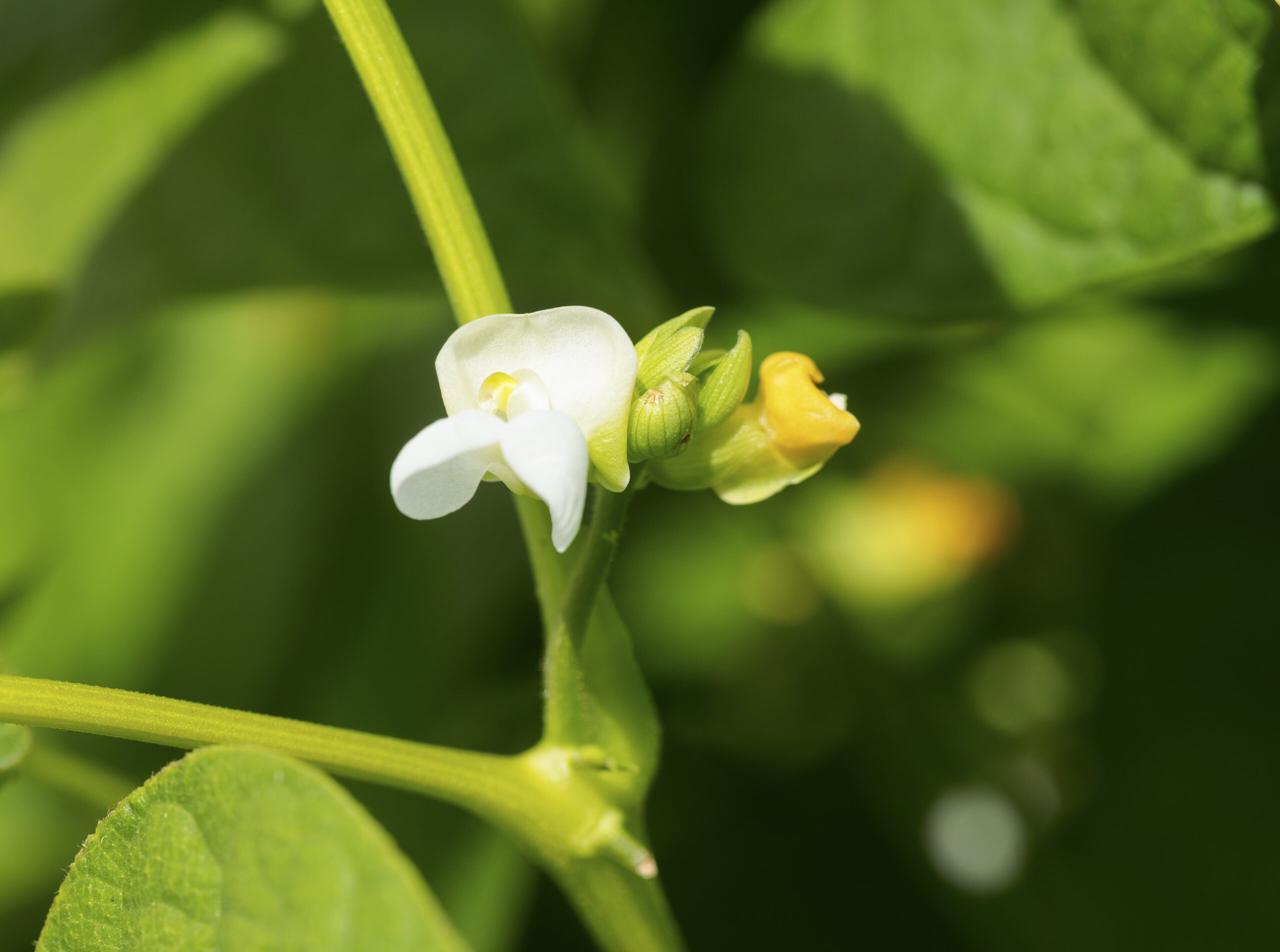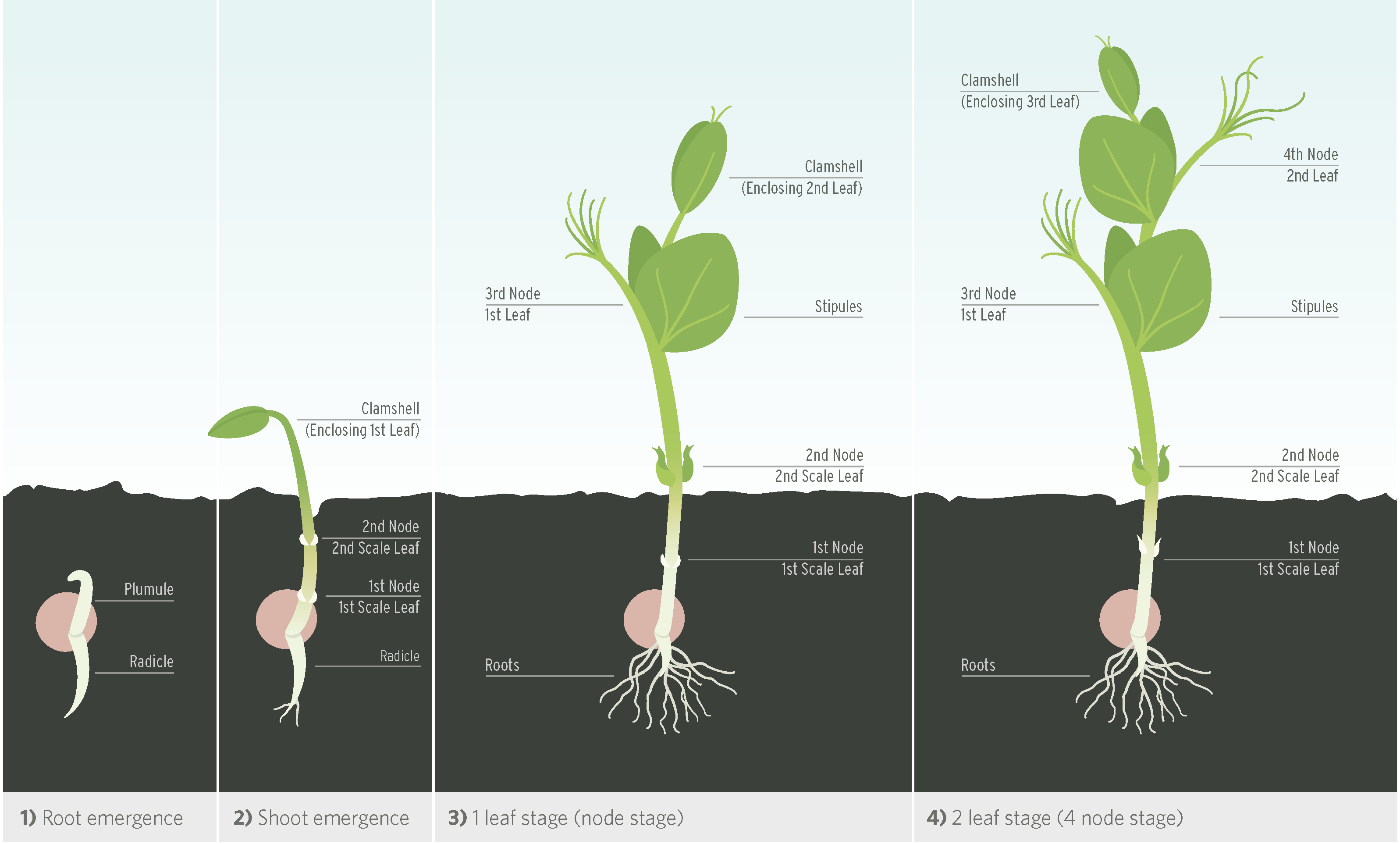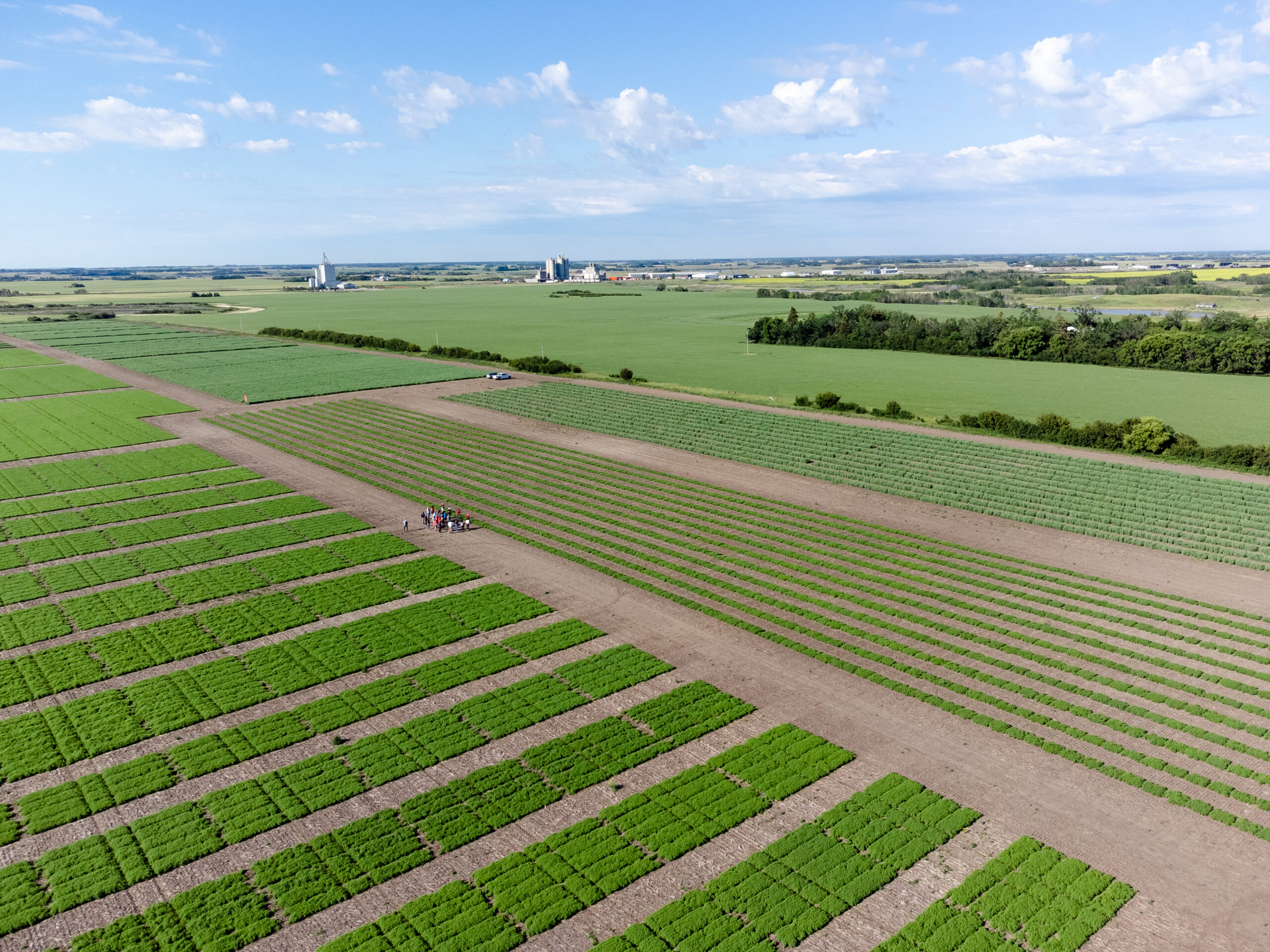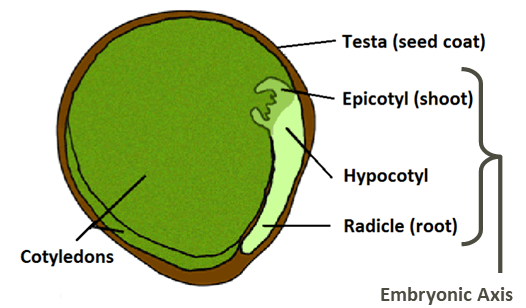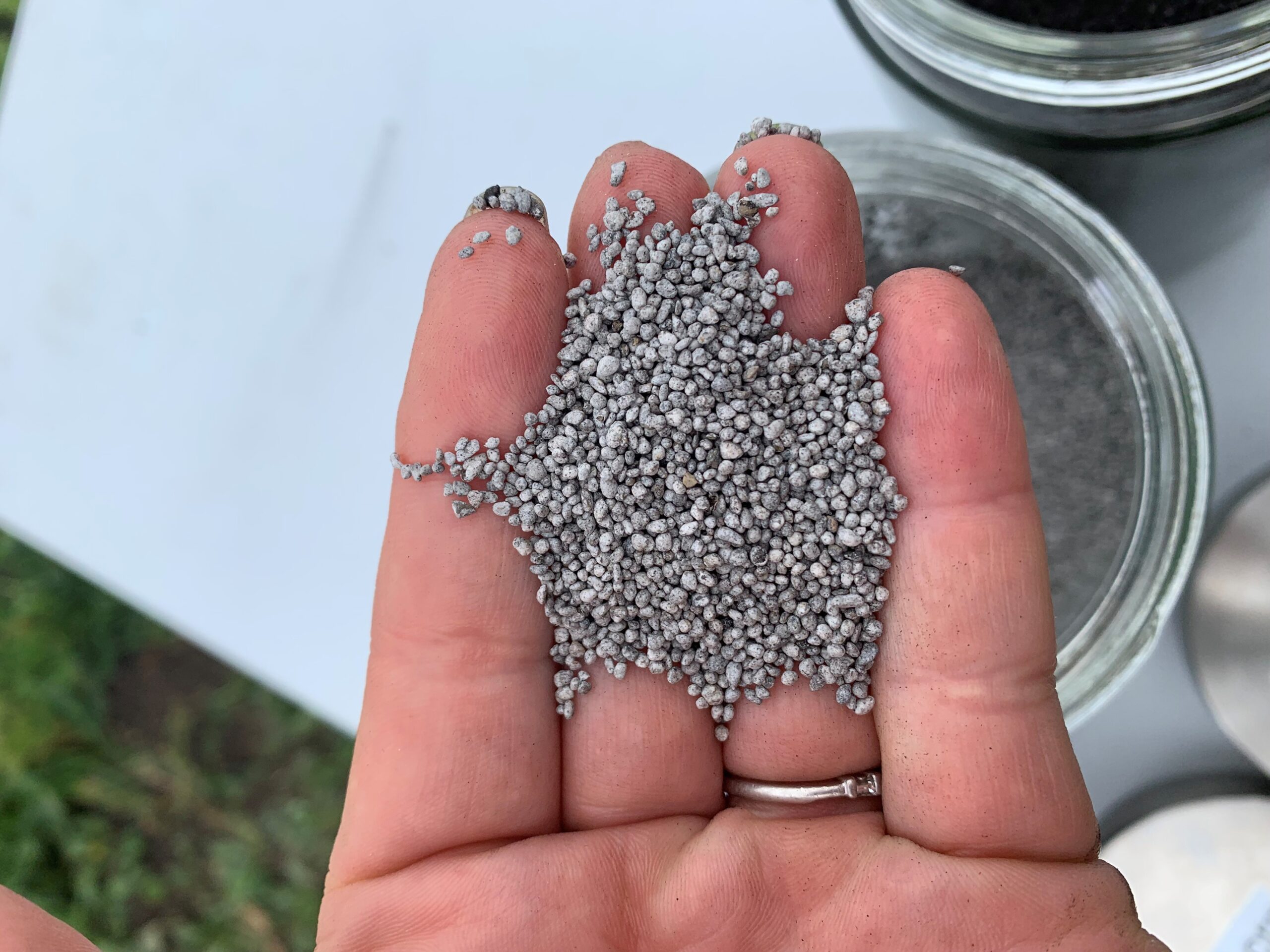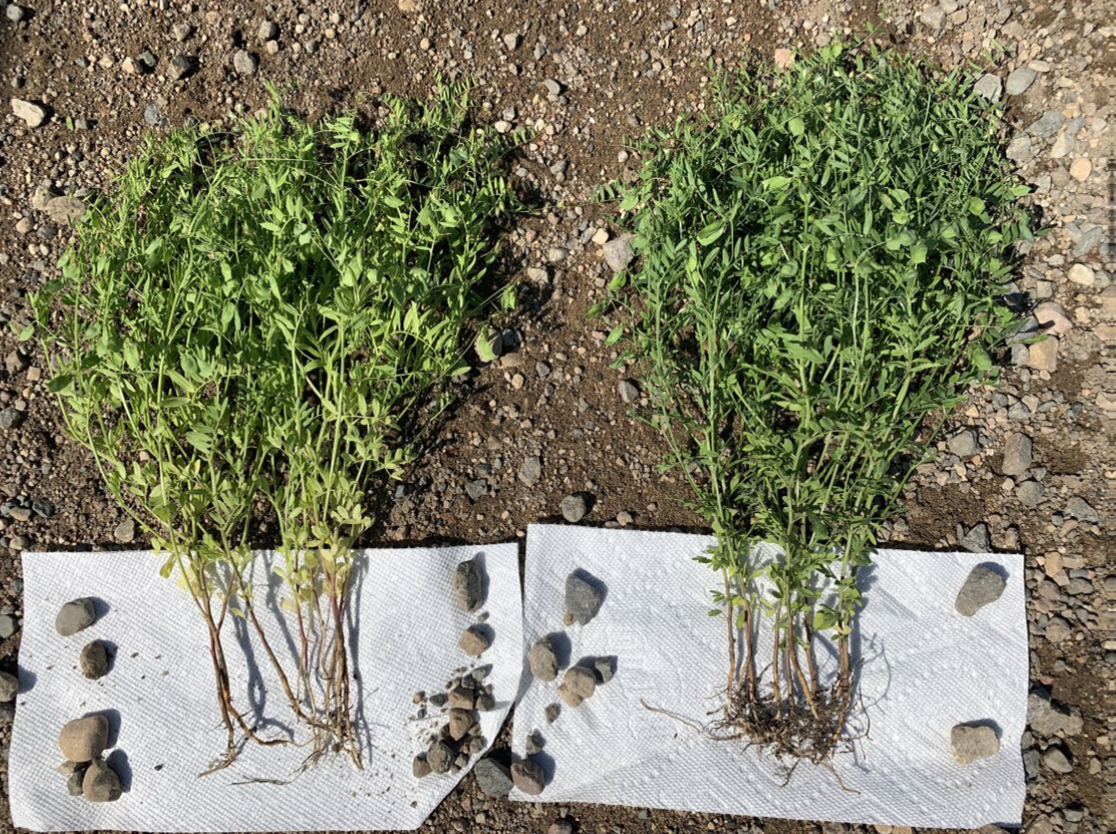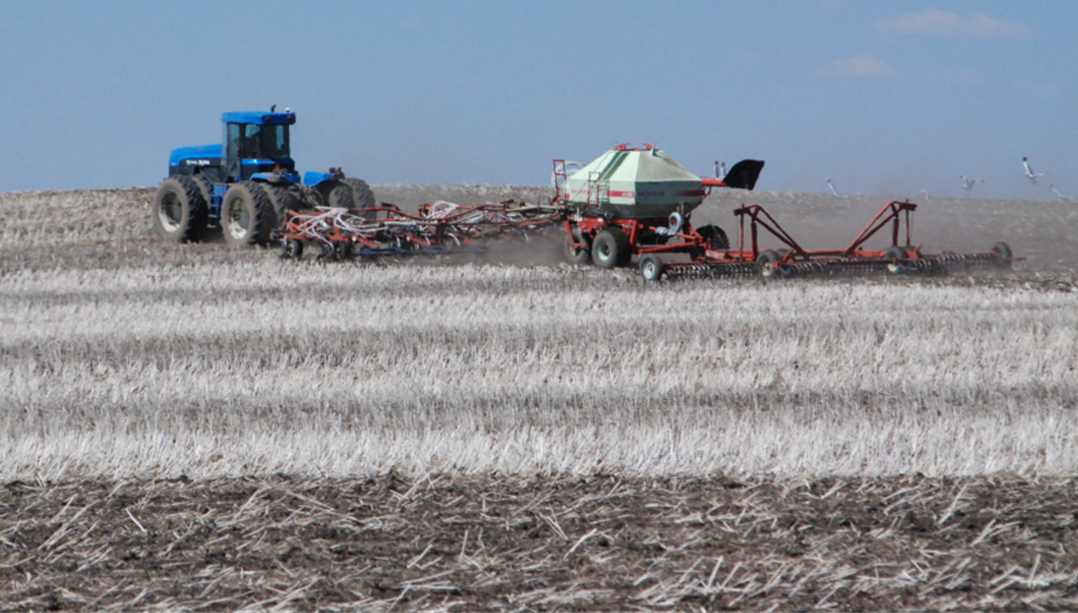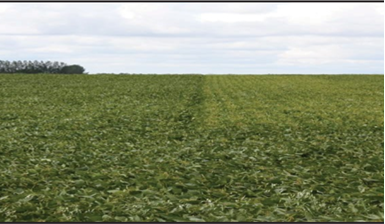Description & Adaptation
Dry beans (Phaseolus vulgaris) are a dicot crop with epigeal emergence, meaning that after germination, the cotyledons, and the growing point push up above ground. The first true leaves are single and opposite, with all following leaves being trifolate, with three leaflets arranged on alternate sides of the stem. White, purple, or pink flowers, depending on the market class, emerge at the upper leaf axils. Flowers are self-pollinated prior to opening but are susceptible to heat and moisture stress that can result in flower abortion.
Two basic plant growth habits are found in dry edible beans, determinate (bush) or indeterminate (vining or trailing). With determinate growth, stem elongation stops when the terminal flowers on the main stem develop. Indeterminate growth means that flowering and pod filling will continue simultaneously or alternately if temperature and moisture availability permit growth to occur.
In addition to the distinction between determinate and indeterminate there are four plant growth types:
- Type I: determinate bush with five to nine nodes on the main stem.
- Type II: indeterminate bush-type with 10 to 12 nodes on the main stem and three to four branches.
- Type III: indeterminate, prostrate vine with 10 to 12 nodes on the main stem and several branches.
- Type IV: indeterminate, with strong climbing tendencies requiring trellis systems for optimum production.
Only the first three types are cultivated in Saskatchewan for field crop production. Depending on if narrow rows are used (solid seeding) or wide row (30 to 36 inches), different growth types are better suited. Narrow-row production should focus on bush-type varieties to help with harvest ease and those Type II varieties that have pods held higher off the ground.
Two of the greatest factors in the adaptation of dry beans in Saskatchewan are temperature and moisture. Dry beans are very sensitive to temperature and can easily be killed and damaged by frost. For this reason, areas that have less risk of late spring frosts or early fall frosts are better suited to dry bean production. Yields are also limited if they encounter moisture stress at flowering and pod formation, making them better suited for areas where irrigation is available. They prefer medium-textured loam soils and high residual fertility. If not growing in irrigated areas, the Thin Black soil zone is best suited for dryland production. Later summer rainfall is more likely to help with flowering and pod fill, and the risk of frost in late spring or early fall is lower in the Thin Black soil zone.
When choosing a field for dry bean production, producers should carefully consider field history and soil type in terms of drainage and erosion resistance. Dry beans can be very sensitive to herbicide residues, so knowing the field history is very important to ensure herbicides used the prior year will not be an issue. Dry beans, like other pulse crops, can be particularly sensitive to clopyralid, Muster®, and atrazine, among others. Cropping rotation can also play a large role in the reduction of disease by avoiding growing beans within four years of each other, and increasing the length of time between other crops that are white mould hosts such as canola, potatoes, sunflowers, peas, and lentils. Dry beans do not tolerate salinity or excessively wet soils. They are very susceptible to ponding water. Standing water for 24 hours may severely damage dry bean seedlings. Beans are also very sensitive to cold soils and soils that are not under heavy trash. Encouraging warmer soils in the spring will help encourage rapid germination and growth. Producers should also keep in mind that the crop will leave very little residue on the soil surface and plans should be put in place to ensure that erosion is not an issue following harvest.
Related Resources
Varieties
Dry beans are described by their seed coat colour and size, which is referred to as the bean type. Within each bean type, there are several different varieties with different growth habits. There are many different types available as seen below.
Bean types grown in Saskatchewan include pinto, navy, great northern, small red, black, shiny black, and yellow. Of those bean types, most of the acres consist of pinto beans, with some great northerns, and small reds grown.
Bean varieties can be determinate bush-type, indeterminate bush-type, or indeterminate vine. Producers should keep the bean growth habit in mind when choosing varieties, as the growth habit will affect production techniques. While all growth habits can be grown in row-type production, determinate bush-type is best suited for growers seeding on narrower rows or solid seeding.
Taking note of the height of bottom pods is also important if they are not going to be pulled or undercut, but swathed or straight cut, as the lower pods can contribute to large harvest losses if, during harvest operations, cutterbars cannot get underneath them.
Long-Term Dry Bean Averages for Saskatchewan 2020
Market Class
| Yield (% CDC Pintium) | |||||||||
|---|---|---|---|---|---|---|---|---|---|
| Market Class | Variety | Years Tested1 | Irrigation | Dryland | Days to Flower | Maturity Rating2 | % Pod Clearance3 | Seed Weight (g/1000) | Growth Habit4 |
| Pinto | CDC Pintium | 9 | 82 | 85 | 50 | E | 85 | 350 | I |
| Island | 7 | 101 | 98 | 55 | M | 79 | 355 | II | |
| Medicine Hat | 5 | 107 | 99 | 58 | M | 72 | 360 | II | |
| CDC WM-2 | 7 | 93 | 87 | 52 | M | 79 | 365 | II | |
| CDC WM-3 | 2 | 89 | 83 | 52 | M | 78 | 360 | II | |
| Navy | Bolt | 6 | 88 | 88 | 58 | L | 82 | 190 | II |
| Portage | 7 | 84 | 81 | 52 | M | 85 | 175 | II | |
| OAC Spark | 4 | 74 | 88 | 55 | L | 81 | 163 | I | |
| AAC Shock | 3 | 86 | 96 | 51 | M | 89 | 186 | II | |
| Small Red | AC Redbond | 3 | 98 | 82 | 51 | M | 65 | 290 | II |
| Black | CDC Blackstrap | 9 | 100 | 100 | 53 | M | 85 | 195 | II |
| CDC Superjet | 7 | 98 | 92 | 58 | L | 85 | 170 | II | |
| flor de junio | CDC Ray | 5 | 113 | 107 | 56 | L | 70 | 300 | III |
| Yellow | CDC Sol | 7 | 91 | 87 | 55 | L | 78 | 399 | I |
- 1Co-op and regional trials grown in narrow rows. Since 2002 CDC Pintium had been the check variety. In 2019 CDC Blackstrap became the new check. Lines that did not CDC Blackstrap were adjusted based on relative performance to CDC Pintium.
- 2Maturity ratings based on E = 100 days; L = 110 days for May 20 planting to swathing maturity.
- 3Pod clearance: percentage of pods that completely clear the cutterbar at time of swathing (~4 cm).
- 4Growth habit: I = Determinate bush; II = Indeterminate bush; III = Indeterminate vine.
Related Resources
Seeding
Traditionally dry beans are planted on 70 to 90 centimetres (cm) or 30–36 inch rows, however, in areas where cereals, oilseeds, and other pulses are more common, adoption of dry beans as an alternative crop is easier if using current equipment. Dry beans can be successfully grown when planted with air drills and seeders on narrower row spacing (6 to 12 in) and are referred to as solid seeded when grown this way. Given the large difference between row spacing in these two systems, different management practices are followed.
Specialized row crop equipment is used to plant beans in rows 70 to 90 cm (30 to 36 in) apart. Sugar beet seeders can also be modified to plant beans in rows 56 cm (22 in) apart. Given the precise placement and metering of row crop seeders, dry bean seeding rates are targeted to obtain a precise number of viable seeds per acre. While ideal plant stand densities will vary somewhat based on bean type, most target 100,000 plants per acre, or 18 seeds per metre of row. This works out to around 40 to 50 pounds per acre (lb/ac) of seed, depending on the size of the seed.
When beans are seeded using air seeders and air drills on narrower row spacing, several adjustments are made to the row cropping system:
- Populations are adjusted to take advantage of the more even distribution of plants across the ground.
- Determinate bush-type varieties are chosen that resist lodging better and have higher pod set for harvest.
- Extra care to reduce seed damage when being handled and put through the seeders and drills.
- Tramlines should be considered to avoid damage when spraying that can result in delayed beans, complicating harvest timing.
When grown on narrower rows, bean plants are not as crowded and are more evenly distributed across the field. This means seeding rates can be adjusted to take advantage of the reduced in-row competition. Seeding rates tend to be heavier and will increase seeding costs in solid seeding systems, compared to row crop seeding. Growth habits will also affect seeding rates. Indeterminate vine-type beans will require lower seeding rates than determinate bush-type, as the plants vine more and will cover the ground more quickly. Some air through the canopy is important to reduce diseases, so too heavy of a seeding rate is discouraged. Seeding rates should be calculated for the specific seed lot, based on the seed size. Generally targeting 45 plants per metre squared (four plants per square foot) on solid seeding dry beans is a good target. The following formula will calculate your desired seeding rate:

To convert to pounds per acre, multiply by 0.89.
A major concern and consideration when solid seeding beans is maintaining seed quality. Beans are very susceptible to mechanical damage and damaged beans can develop a condition termed baldhead, where only the cotyledons and stem emerge but no leaf development follows.
To reduce damage, seeders should be operating at as low of fan and air speed as possible, while still ensuring even distribution across the air drill. It can be difficult to get even distribution, as often there are gaps in the row followed by heavy density if distribution is not even. Some drills can be modified with seed deflection pads in manifolds to reduce cracking. Using conveyors, when possible, rather than augers, will also help.
Managing the moisture of the seed can also reduce mechanical damage. Seed with a moisture content of at least 14% is less prone to cracking. Some growers will soak beans by suspending a minibulk of seed and running a hose into it until water comes out the bottom, letting it drain, and then repeating for eight hours. Allow the beans to temper for 24 hours before being put in the seed tank. This should also be done prior to applying seed treatments or inoculants.
To reduce the risk of rock damage to harvesting equipment and reduce earth tag on beans, solid seeded beans should be rolled after seeding and prior to emergence. It is best to roll as close to seeding as possible, and up to three days after, to avoid damaging the growing stems after the seed has germinated. Pressure on the soil can snap off the growing and emerging stem, killing the plant. Unlike peas and lentils, dry beans are unable to grow back from scale nodes if the stem gets broken off.
Despite their differences, there are some seeding practices that are similar in each system.
The seed depth should be uniform at 5–6 cm (2–2.5 in), to ensure enough moist soil is around the bean to initiate germination, and that bean plants will emerge evenly. Seeds planted too shallow risk drying out as the relatively large bean seed requires quite a bit of moisture to hydrate. If planted too deep, plants struggle to emerge and are more prone to seedling diseases. Bean plants crowded in rows can help break through heavier soils if pushed at the same time. Even germination makes the timing of all operations easier throughout the growing season and harvest.
Dry beans are typically seeded between May 25 and June 5 in Saskatchewan. Having epigeal germination means the growing point and cotyledons are both above-ground, making them particularly vulnerable to late spring frosts. Seeding much later than June 5 puts dry beans at risk of early fall frosts.
Seeding within this time also generally means soil temperatures are warmer. Ideally, soil temperatures should be at a minimum of 12°C for quick germination and growth. At cooler temperatures these processes will be much slower, increasing the risk of seedling diseases, and delaying the time to emergence.
Related Resources
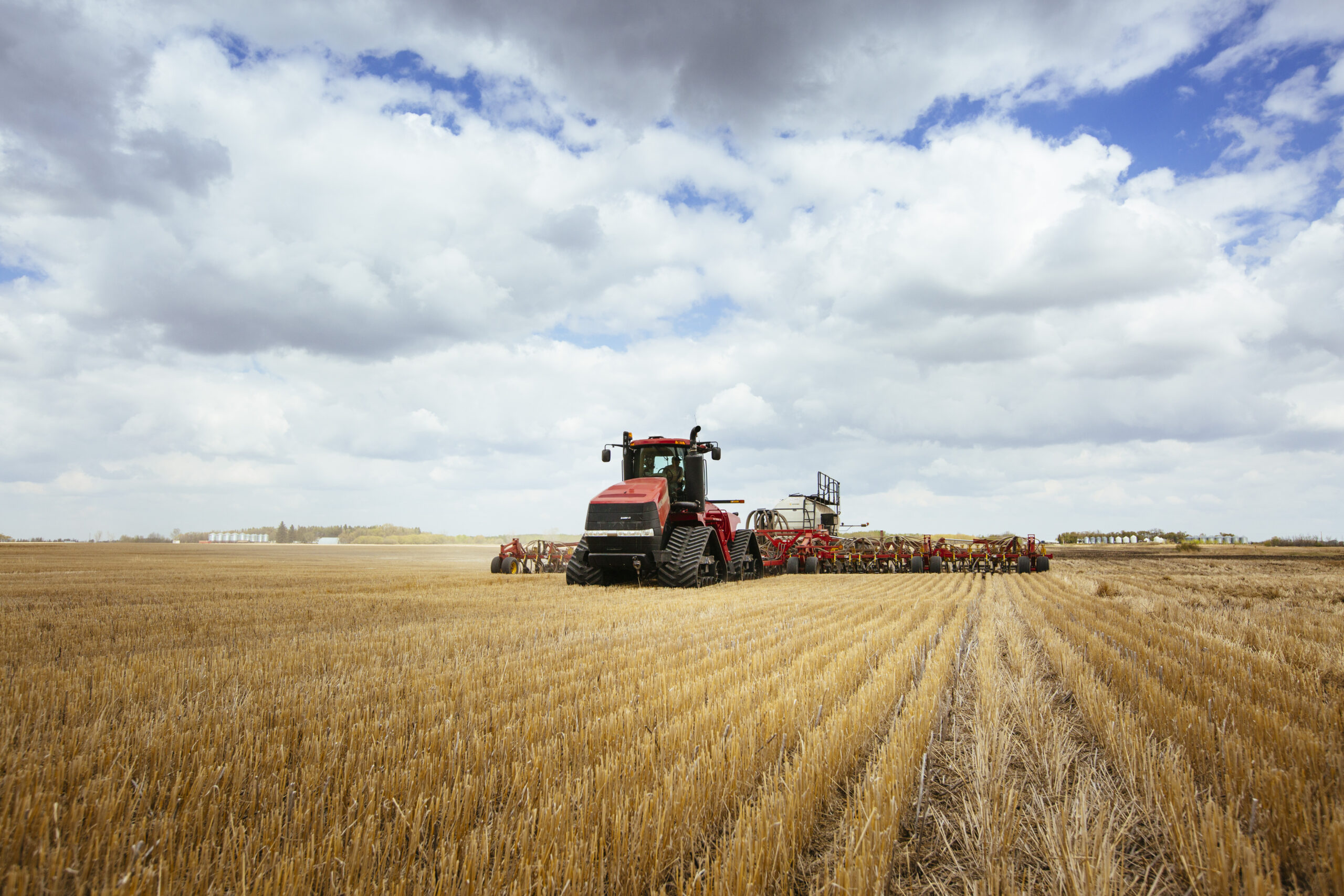
Pre-Seed and Pre-Emergent Herbicide Options for Dry Beans
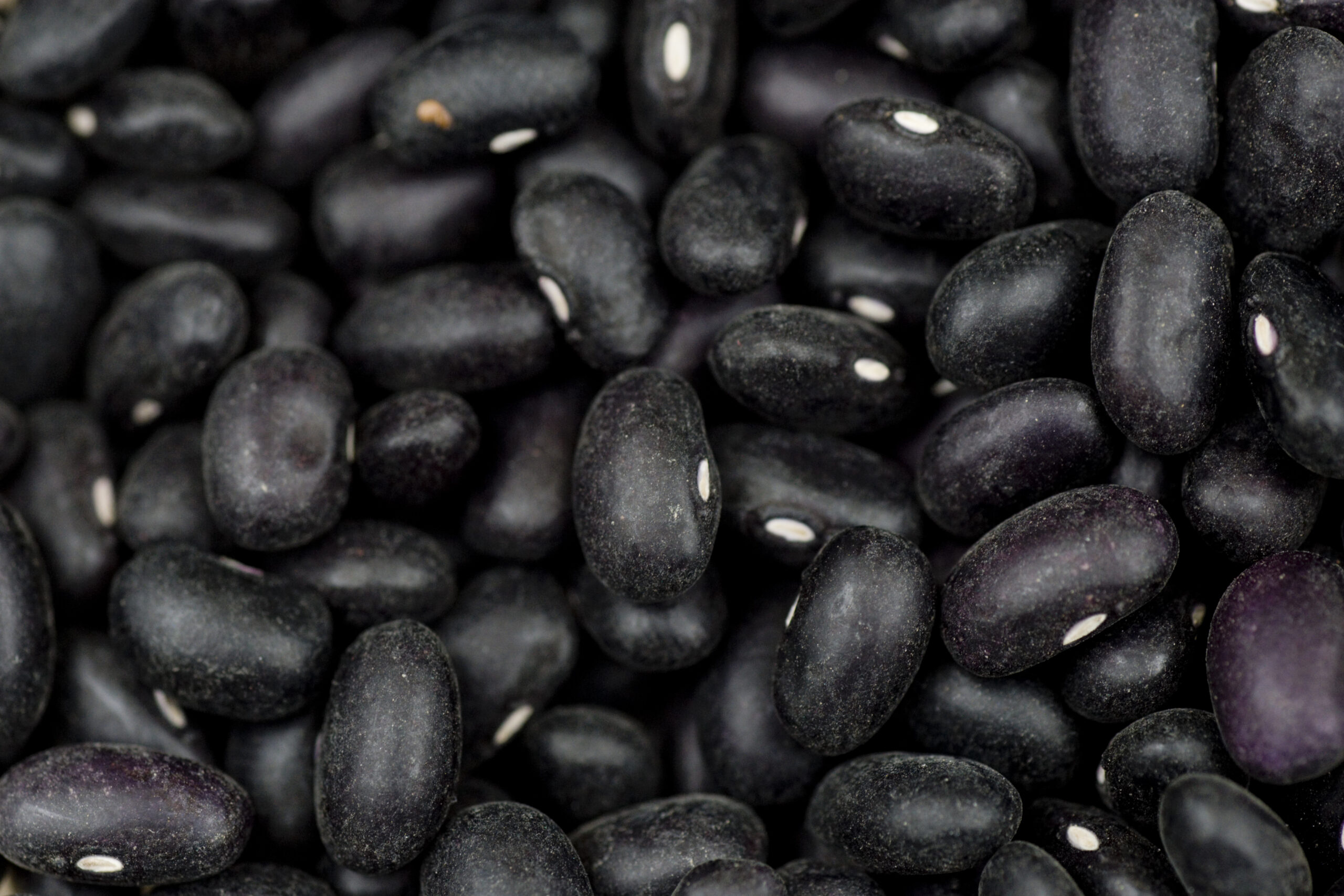
Dry Bean Seed Treatment Options
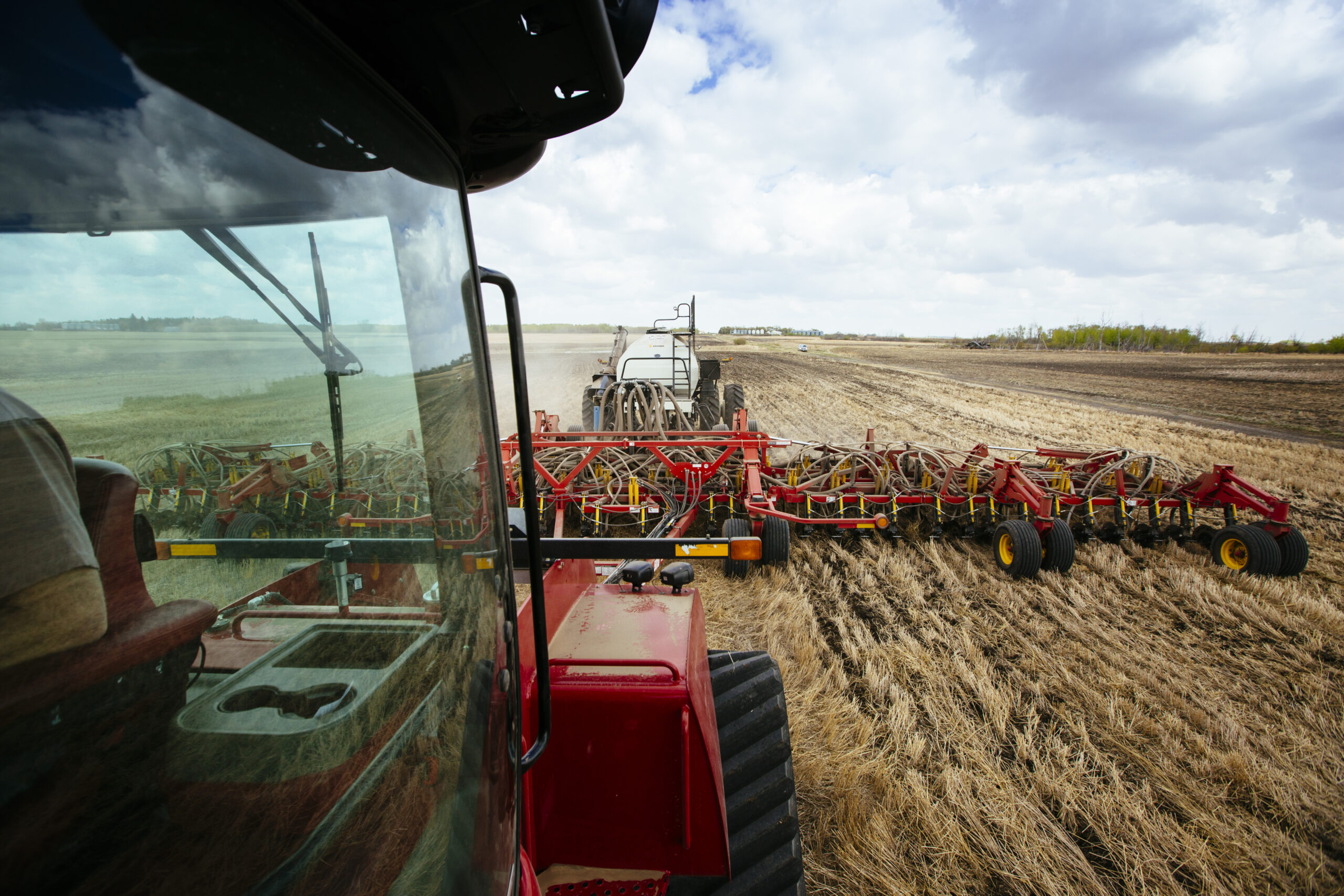
Calculating Seeding Rates
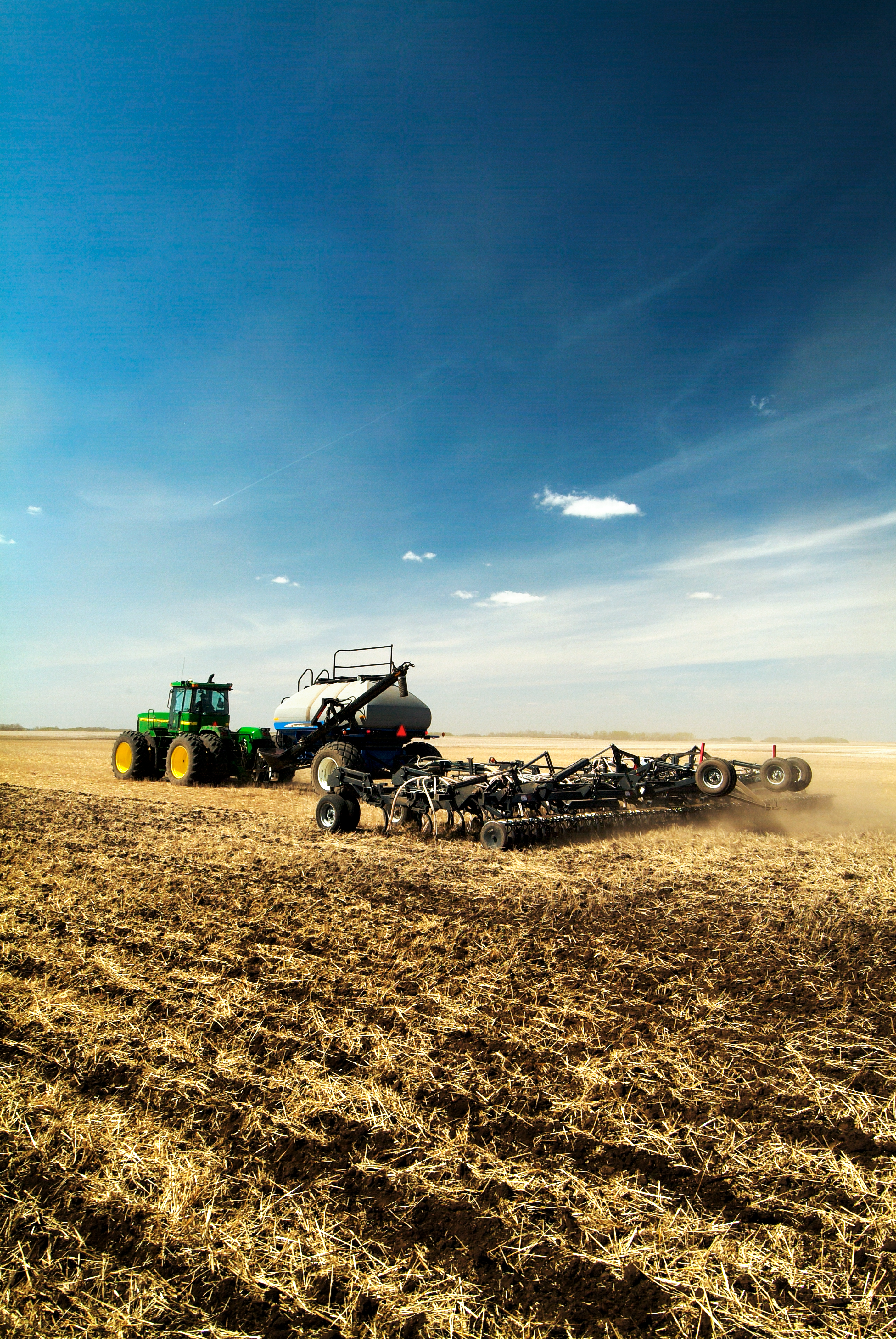
Seeding Tips For Pulse Crops
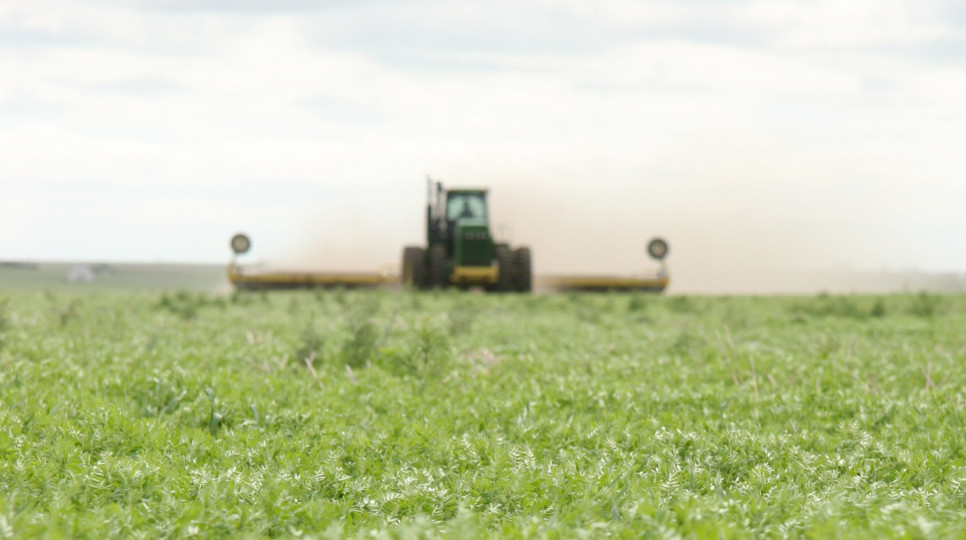
Tips for Rolling your Pulse and Soybean Crops
Inoculation & Fertility
Like other pulse crops dry beans can fix some of their own nitrogen when inoculated, however, they are not as efficient at fixing nitrogen compared to peas, lentils, faba beans, or chickpeas. Dry beans generally can be expected to fix around half of their nitrogen requirements from fixation, but depending on environmental conditions, they may fix anywhere from five to 70 lb/ac of nitrogen.
Dry beans require the bacteria Rhizobium phaseoli to form nodules and fix nitrogen for the plant. Granular, dry, and liquid inoculants are available for growers to use. When choosing an inoculant, the compatibility with any seed treatments should be taken into consideration. Seed treatments can affect bacteria survival rates. Using sequential applications where the seed treatment is applied and dried before the inoculant is applied will help reduce the negative interactions. Simultaneous applications can be done with some seed treatments and inoculant formulations but are riskier and the seed should be seeded immediately. Using granular inoculant applied in row with the seed will help to avoid issues with compatibility.
Effectiveness of nodulation should be evaluated by digging plants up and looking for nodules on roots. It will take up to a month before nodules form and are able to be seen on roots. Nodules should be sliced open to ensure they are active and fixing nitrogen. Active nodules will be dark red in the centre.
Dry beans do best when grown on fertile soil, and soil sampling to determine background fertility available is a good practice. Dry beans are very sensitive to seed-placed fertilizer, and most should be either broadcast prior to seeding, or applied in a sideband if the planter being used has the capability.
While dry beans do fix a portion of their required nitrogen, in general it is recommended to apply some starter nitrogen to carry the plant through until the nodules have formed. Studies have shown that there are some significant differences between dry bean types and varieties on their ability to fix nitrogen, however, clear guidelines on specific varieties are not available, thus starter nitrogen is recommended with all dry beans.
Work done in Alberta with irrigated dry beans suggests that soil nitrogen levels in the top 30 cm (12 in), plus that provided by applied fertilizer, should total 80–100 lb/ac of nitrogen when growing dry beans in row production systems, and as high as 100 to120 lb/ac when growing in solid seeded systems. In Manitoba, provincial guidelines based on residual nitrogen in the soil profile exist for both wide-row and narrow-row production in relation to the target yield. The recommendations are consistent with the Alberta recommendations. Wide-row production often has some tillage associated with weed control, which can increase mineralization rates of organic matter, contributing more nitrogen to the crop during the growing season, which is why nitrogen rates are slightly lower on wider row production.
Phosphorous is important for dry bean nodule formation, flowering, seed formation, and to help speed up maturity. Dry beans respond best to soils that are high in residual phosphorous more so than to phosphorus applied the year of planting. Proper planning in rotation can help ensure dry beans have a good supply of phosphorus available the year they are planted. If soil test levels are low (less than 28 kg/ha or 25 lb/ac), an additional 17 kg/ha (15 lb/ac) can be applied safely with the seed if solid seeded on 15 to 17 cm (6 to 7 in) rows, in good moisture. If higher rates are required, or if beans are grown on wider rows, then phosphorous should either be side banded or broadcast prior to seeding.
Generally, Saskatchewan soils have adequate amounts of potassium and sulfur. Both are important for healthy bean growth and development, and a soil test to confirm nutrient levels is a good practice. If beans are grown on sandier textured soils, it is more likely that potassium and sulfur will be needed. Both nutrients should be either side banded or broadcast and not applied in the seed row. Since sulfur is often highly variable across a field, growers may choose to apply some sulfur to ensure that areas are not deficient, even though composite soil tests may show adequate levels.
Micronutrient deficiencies are not widespread across Saskatchewan, and it is not typically an issue in dry bean production. However, dry beans are sensitive to low levels of zinc and may show symptoms of zinc deficiency when soil test levels are marginal. Sometimes zinc deficiencies may show up early in the season when soils are cooler and root development limited, and then later grow out of symptoms. If symptoms are observed, tissue sampling and soil testing can be used together to diagnose the cause. Dry beans experiencing zinc deficiencies will show interveinal chlorosis in the new leaves, which is a yellowing of the leaf tissue between green leaf veins. The bean plants will have shorter internodes and can appear to be stunted. Top leaves may start to curl under and have a slight bronzed appearance.
